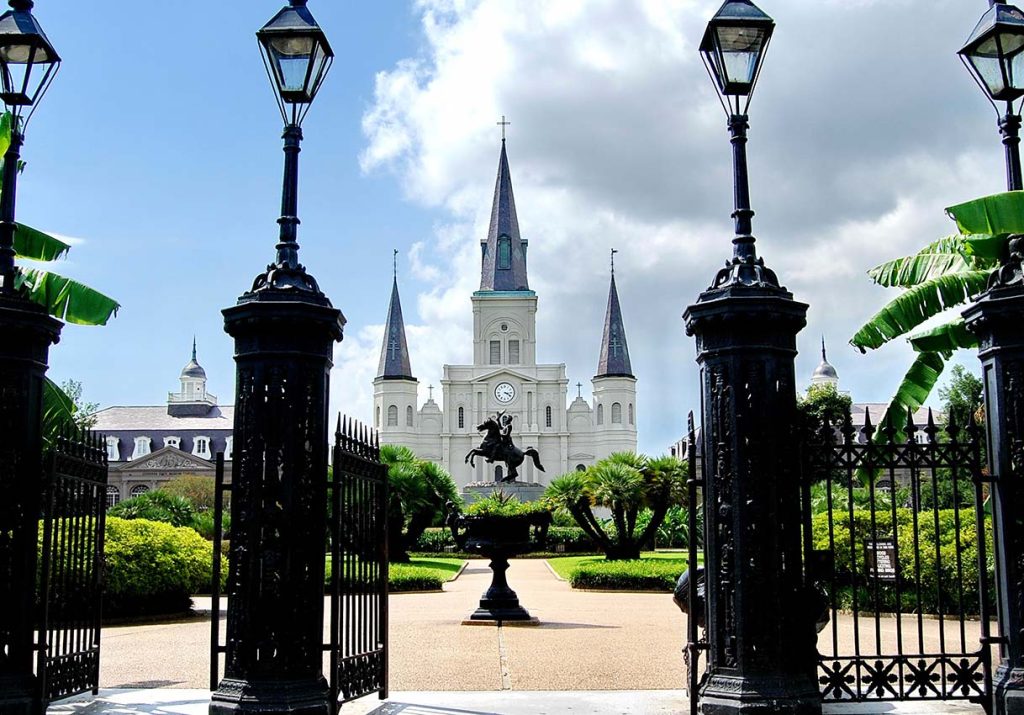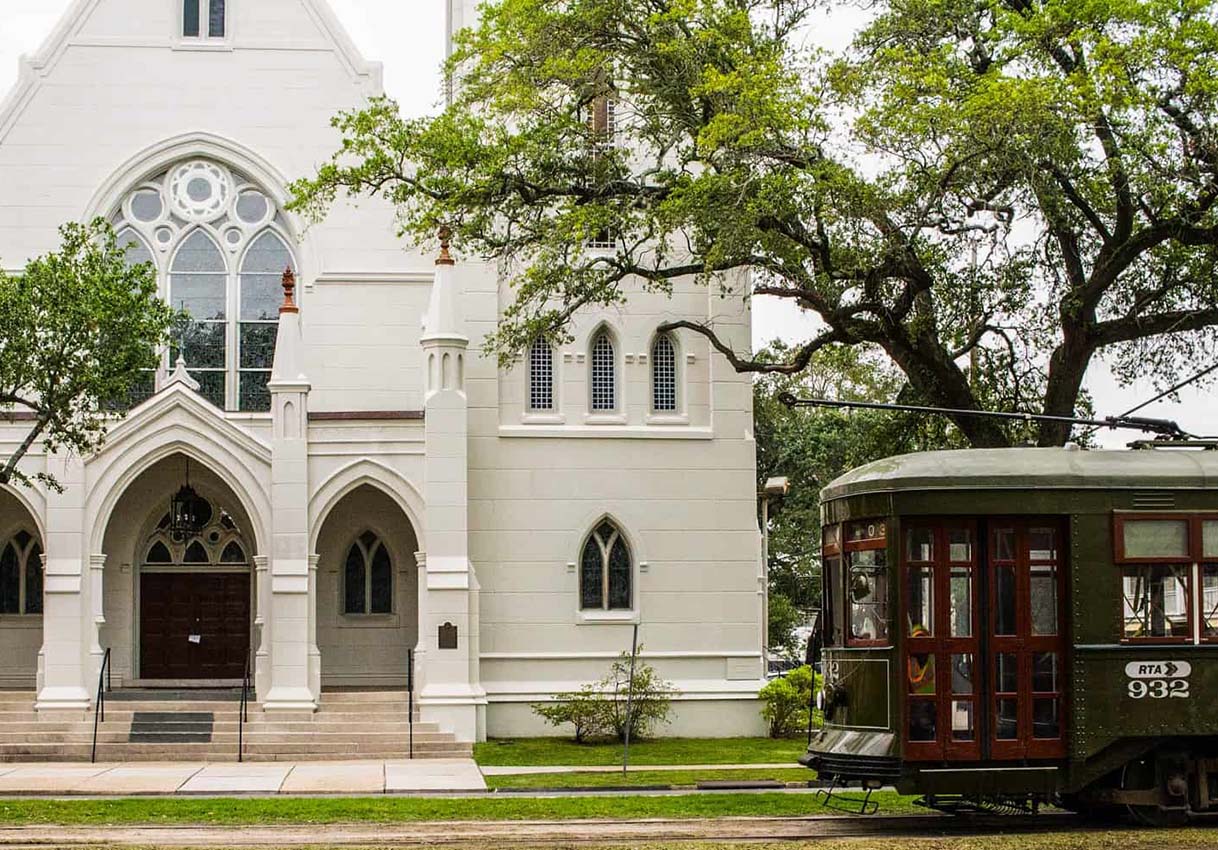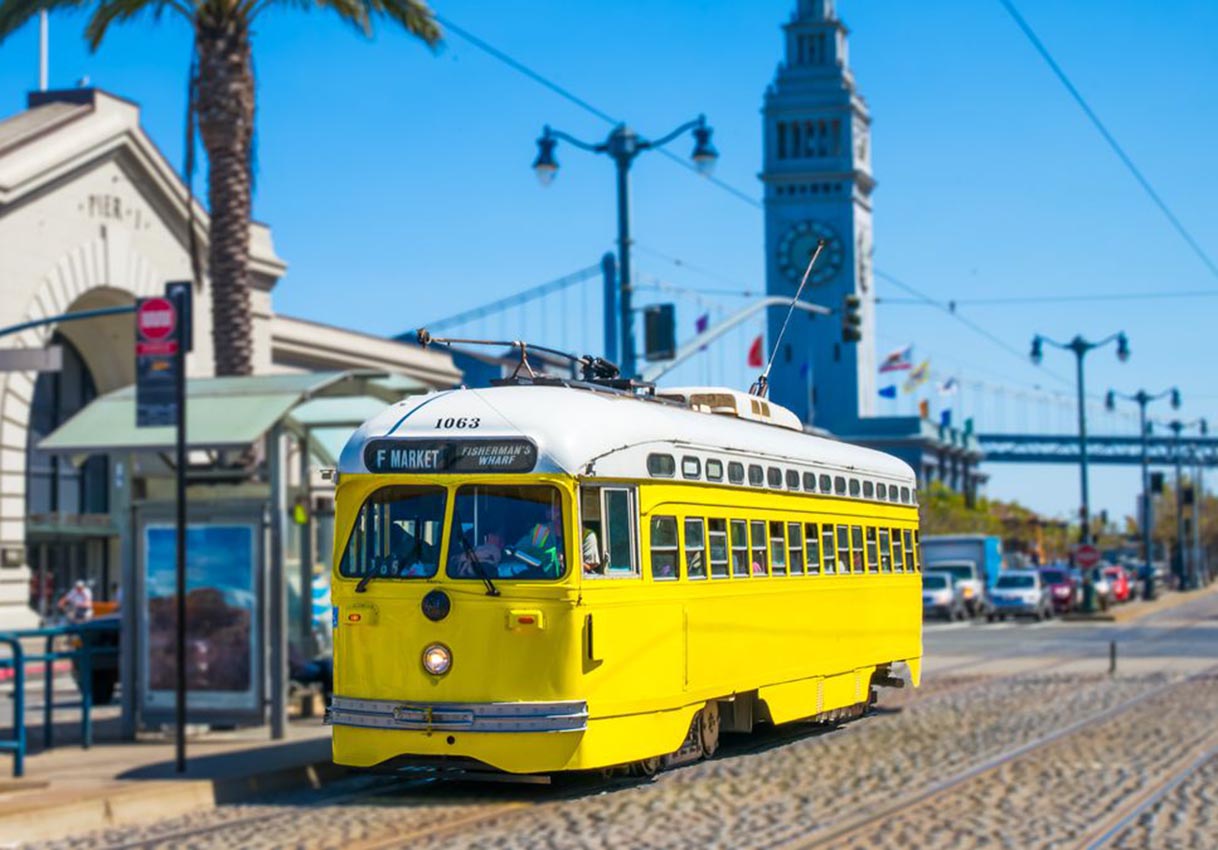I recently had the privilege of immersing myself in the fascinating world of New Orleans, Louisiana. This vibrant city, renowned for its lively music, delectable cuisine, and, most notably, its captivating history, proved to be a goldmine of historical landmarks waiting to be explored. I’ll take you through three historical gems that I had the pleasure of visiting and share insights into four other must-see historical sites in this enchanting city. From the services and amenities at each location to practical details like ticket prices and booking platforms, you’ll find all the information you need to embark on your own historical adventure in New Orleans.
St. Louis Cathedral
Location: 615 Pere Antoine Alley, New Orleans, LA 70116
My exploration of New Orleans’ rich history began with a visit to the renowned St. Louis Cathedral, nestled in the heart of the historic French Quarter. This splendid cathedral, boasting origins dating back to the late 18th century, stands as a masterpiece of Gothic Revival architecture. As I crossed the threshold into its sacred precincts, I was immediately enveloped by an atmosphere of tranquility and reverence.

The St. Louis Cathedral offers a range of services and amenities to cater to both spiritual seekers and history enthusiasts:
- Regular Mass Services: The cathedral hosts regular Mass services, welcoming visitors to partake in these spiritual gatherings. Attending Mass provides an opportunity to experience the cathedral’s religious significance and witness its role as a living place of worship.
- Guided Tours: To deepen one’s appreciation of the cathedral’s historical and architectural significance, guided tours are available. These tours are led by knowledgeable guides who provide captivating insights into the cathedral’s rich history and cultural importance.
Pros of St. Louis Cathedral:
During my visit, several aspects of the St. Louis Cathedral stood out:
- Exceptional Architectural Beauty and Artwork: The cathedral’s interior is adorned with exquisite architectural details and stunning artwork, including impressive stained glass windows and intricate sculptures.
- Free Entry for All Visitors: One of the notable advantages of visiting the St. Louis Cathedral is that entry is free for all visitors, making it an accessible and inclusive historical site.
- Enhanced Experience Through Guided Tours: The availability of guided tours greatly enriches the visitor experience by providing historical context and fascinating anecdotes about the cathedral.
Cons of St. Louis Cathedral:
It’s important to note that, like many popular tourist destinations, the St. Louis Cathedral can experience crowding, especially during peak tourist seasons. Navigating through the cathedral and enjoying its serene ambiance may require patience when it’s particularly busy.
The St. Louis Cathedral enjoys a central location within the French Quarter, making it easily accessible on foot from many nearby attractions. Visitors can conveniently include a visit to the cathedral in their exploration of the historic district.
While entry to the St. Louis Cathedral is free, donations to support the ongoing preservation and maintenance of this historical and spiritual landmark are warmly appreciated.
Reservations are not necessary for visiting the St. Louis Cathedral. Visitors can simply arrive and explore this magnificent site at their own pace.
The St. Louis Cathedral is not merely a historical and architectural gem; it also serves as a peaceful haven amid the lively ambiance of the French Quarter. Its spiritual significance and captivating design create a harmonious blend that makes it a must-visit destination for anyone seeking to delve into the history and culture of New Orleans. My time spent within its hallowed halls left a lasting impression, and I departed with a deeper understanding of the city’s rich and diverse heritage.
The National WWII Museum
Location: 945 Magazine St, New Orleans, LA 70130
To embark on a voyage into the 20th-century history of the United States, I embarked on a journey to The National WWII Museum, a place of immersion and education dedicated to preserving the memory of World War II. This extensive museum promises a captivating odyssey through the monumental events, heroic figures, and profound sacrifices of the war years.
The National WWII Museum offers an array of services and attractions that provide a comprehensive and enlightening experience:
- Exhibits and Collections: The museum boasts an extensive collection of artifacts, exhibits, and historical memorabilia, offering a detailed look into the complexities of World War II. These displays range from military hardware and uniforms to personal letters and diaries, immersing visitors in the era’s lived experiences.
- Interactive Displays: Interactive displays and multimedia presentations engage visitors by providing a dynamic and immersive learning environment. These exhibits convey the scale and significance of the war’s impact on both global and personal levels.
- Guided Tours: One of the standout features of the museum is its guided tours. Led by knowledgeable and passionate docents, these tours offer an in-depth exploration of the museum’s exhibits and help visitors gain a deeper understanding of the historical context and individual stories of bravery and sacrifice.
Pros of The National WWII Museum:
My visit to The National WWII Museum left me deeply impressed for several reasons:
- Extensive Collection: The museum’s vast collection of artifacts and exhibits is a treasure trove for history enthusiasts, providing a comprehensive view of the war from multiple perspectives.
- Informative and Engaging Displays: The museum’s exhibits are not only informative but also engaging. They succeed in making history come alive through immersive storytelling and interactive elements.
- Superb Guided Tours: The guided tours, led by knowledgeable docents, add immense value to the visitor experience. Their passion for history and personal insights enhance the depth of understanding.
Cons of The National WWII Museum:
While the museum offers an exceptional experience, it’s worth noting that it can become crowded, especially during peak tourist seasons. Visitors may need to navigate through crowds, which can be less than ideal for those seeking a more contemplative experience.
The museum’s strategic location, a short walk from the French Quarter, makes it easily accessible from various parts of the city. Its proximity to other attractions in the area allows visitors to include it as part of a broader exploration of New Orleans.
Admission fees to The National WWII Museum vary based on the chosen packages and access to specific exhibits. Discounts are frequently available for students and military personnel, making it more accessible to a broader audience.
Online reservations are highly recommended for securing preferred entry times, particularly during peak visitation periods. This ensures a smoother and more organized experience, allowing visitors to make the most of their time at the museum.
The National WWII Museum stands as a living testament to the heroism and sacrifices made during one of the most pivotal periods in human history. My time within its walls was nothing short of a profound and emotionally moving experience. It left me with a deep and abiding appreciation for the countless individuals who shaped the course of the world during World War II. This museum is an essential stop for anyone eager to gain insights into the human stories behind the war’s monumental events and to pay tribute to those who gave so much for a better world.
Oak Alley Plantation
Location: 3645 Highway 18, Vacherie, LA 70090 (Approximately 50 miles from New Orleans)
In my quest to explore the history of the American South, I embarked on a captivating day trip to Oak Alley Plantation, a meticulously preserved antebellum estate that beckoned with its iconic alley of 28 majestic oak trees, casting a spell that transported me back to the 19th century.
The Oak Alley Plantation offers an array of services and experiences that bring the antebellum era to life:
- Guided Tours: Visitors have the opportunity to delve into the plantation’s complex history through guided tours. These tours provide valuable insights into the daily lives of both the plantation owners and the enslaved individuals who lived and toiled on the estate. The depth of historical knowledge shared by the guides adds layers of understanding to the plantation’s past.
- Restaurant: The plantation features a restaurant where guests can savor traditional Creole and Cajun cuisine, allowing them to immerse themselves further in the rich culinary heritage of the South.

Pros of Oak Alley Plantation:
My visit to Oak Alley Plantation left me enchanted for several compelling reasons:
- Breathtaking Oak Alley and Grounds: The highlight of Oak Alley Plantation is undoubtedly its enchanting alley of towering oak trees. The sight of these stately giants forming a natural corridor is nothing short of breathtaking. The meticulously maintained grounds, adorned with vibrant gardens, create a picturesque setting that evokes the grandeur of the antebellum era.
- Insightful Guided Tours: The guided tours are a treasure trove of historical knowledge. They shed light on the complexities of plantation life, offering perspectives from both the privileged owners and the enslaved community. This balanced approach provides a thought-provoking experience.
- A Unique Glimpse into the Antebellum South: Oak Alley Plantation offers a unique opportunity to gain a deeper understanding of the antebellum South, a period marked by both opulence and social injustices. It allows visitors to engage with this history in a meaningful and reflective way.
Cons of Oak Alley Plantation:
It’s essential to consider the distance from New Orleans when planning a visit to Oak Alley Plantation. The plantation is located approximately 50 miles away, making it a day trip for most visitors. While this distance may be a drawback for some, the experience it offers more than compensates for the travel time.
Most visitors opt for guided tours that include transportation from New Orleans, eliminating the need to drive. Alternatively, if you prefer to drive independently, Oak Alley Plantation is accessible by car.
Admission fees to Oak Alley Plantation vary depending on the chosen tour packages and experiences. Discounts may be available for children and seniors, enhancing accessibility for a broader range of visitors.
To secure your spot and plan your visit efficiently, reservations for guided tours can be made online or on-site, ensuring a smooth and organized experience.
Oak Alley Plantation offers a poignant and thought-provoking window into the history of the American South. The sheer beauty of the oak alley, paired with the depth of historical knowledge provided by the guides, creates an enlightening and visually stunning experience. It invites visitors to contemplate the complexities of the antebellum era while enjoying the grandeur of a bygone time. A visit to Oak Alley Plantation is a must for anyone seeking to engage with the profound history of the American South and immerse themselves in its captivating landscapes.
Recommended Historical Landmarks
While my journey led me to these three remarkable historical landmarks, New Orleans offers an abundance of historical treasures waiting to be explored. Here are four more that I highly recommend:
1. The Cabildo:
- Location: 701 Chartres St, New Orleans, LA 70130
- Description: This historic building, located adjacent to St. Louis Cathedral, once served as the seat of colonial government in the Spanish colonial period. It played a pivotal role in the Louisiana Purchase. Explore its museum to delve into the city’s history.
- Personal Insight: The Cabildo offers a fascinating window into New Orleans’ colonial past, and its proximity to the cathedral makes it a convenient stop.
2. Preservation Hall:
- Location: 726 St. Peter St, New Orleans, LA 70116
- Description: For a musical journey through history, visit Preservation Hall, a legendary venue for traditional New Orleans jazz. Attend a live jazz performance to experience the city’s musical heritage firsthand.
- Personal Insight: Preservation Hall is an absolute gem for music enthusiasts, offering an authentic jazz experience in an intimate setting.
3. Garden District:
- Location: Adjacent to the Lower Garden District
- Description: Stroll through the charming Garden District to admire its well-preserved historic mansions and oak-lined streets. This district showcases the city’s 19th-century architecture and grandeur.
- Personal Insight: Exploring the Garden District feels like stepping back in time. It’s a serene and picturesque neighborhood to wander at your own pace.
4. The French Market:
- Location: 1008 N Peters St, New Orleans, LA 70116
- Description: Visit the historic French Market, one of the oldest markets in the United States, dating back to the late 18th century. It’s a vibrant marketplace where you can shop for local crafts, food, and more.
- Personal Insight: The French Market offers a delightful blend of history and commerce. It’s an ideal place to sample local cuisine and pick up souvenirs.
New Orleans’ historical landmarks are a testament to the city’s rich and diverse history, from its colonial beginnings to its pivotal role in World War II. Exploring these sites not only provides a deeper understanding of the past but also offers a profound connection to the culture and heritage of this captivating city. Whether you’re drawn to centuries-old cathedrals, immersive museums, or antebellum estates, New Orleans invites you to embark on a historical journey like no other. As you step into these storied sites, you’ll not only discover history but also create lasting memories of your own. Enjoy your exploration of the Crescent City’s remarkable historical landmarks!




